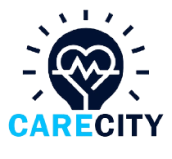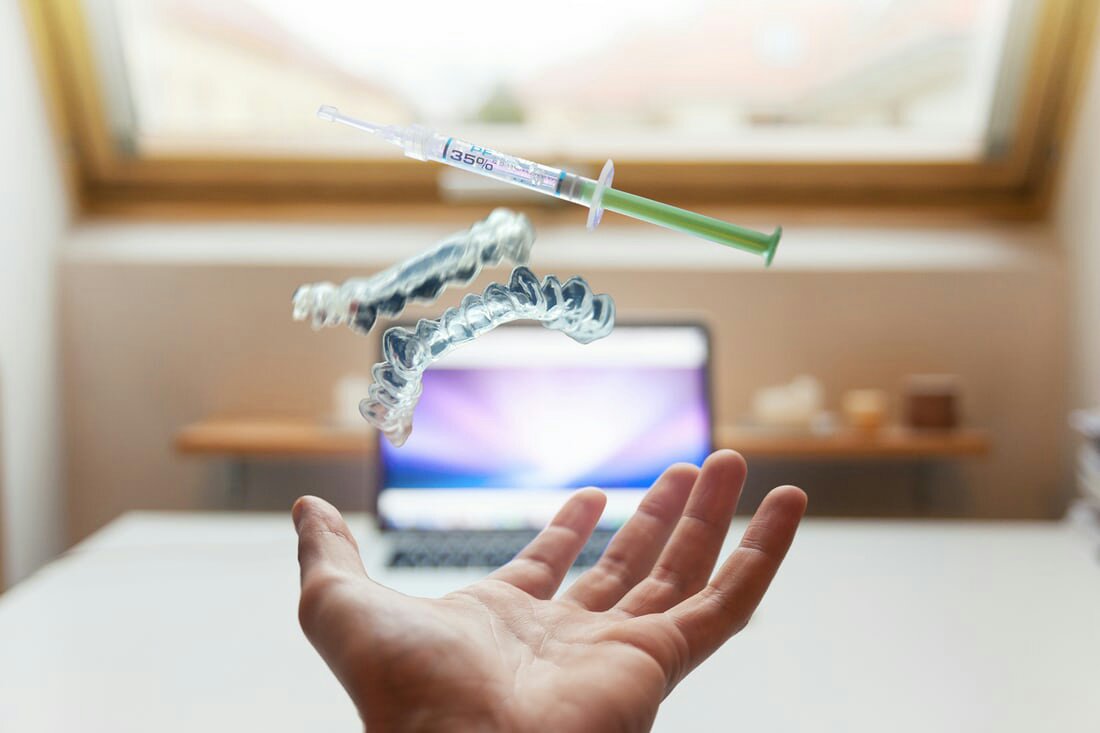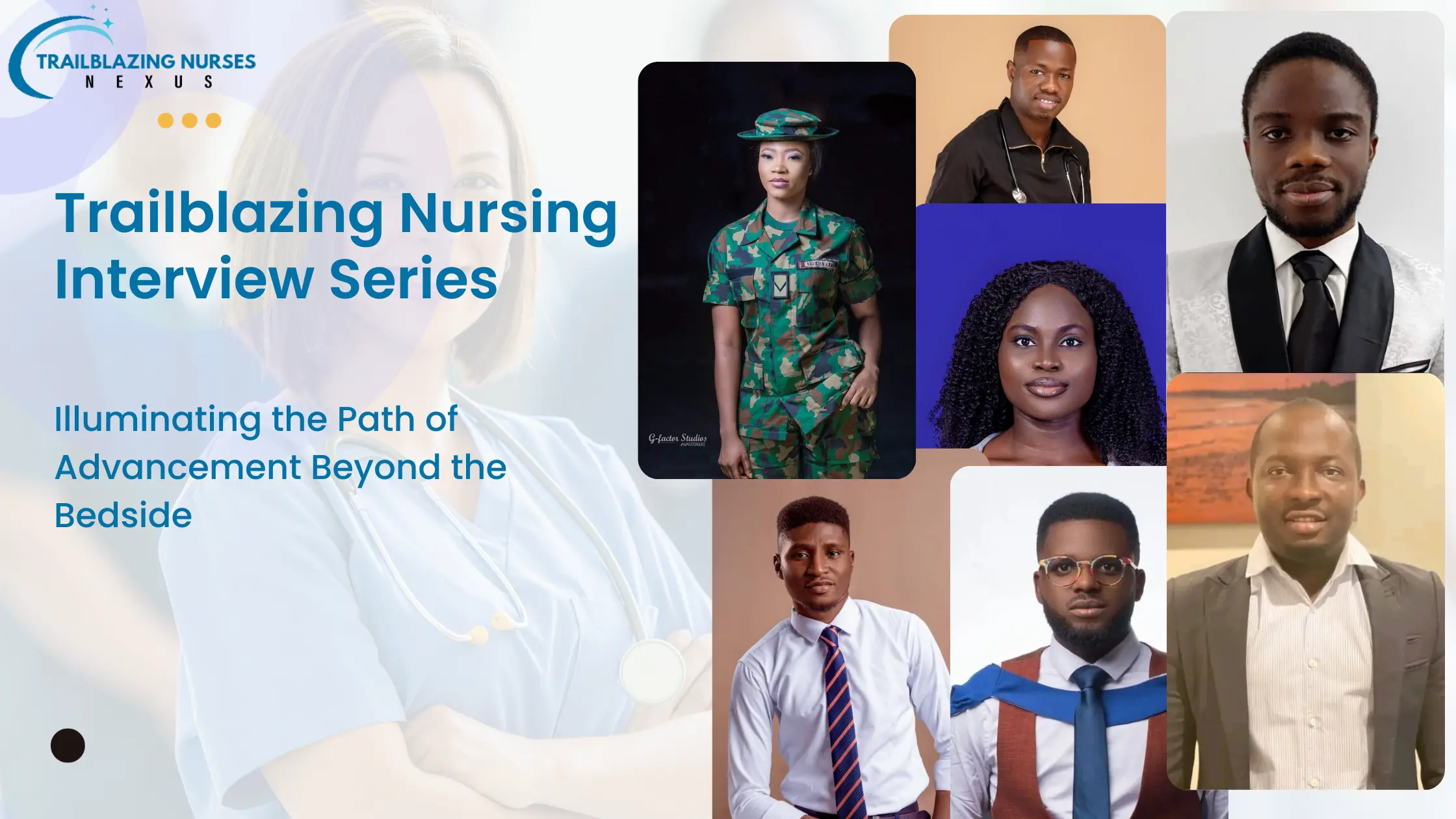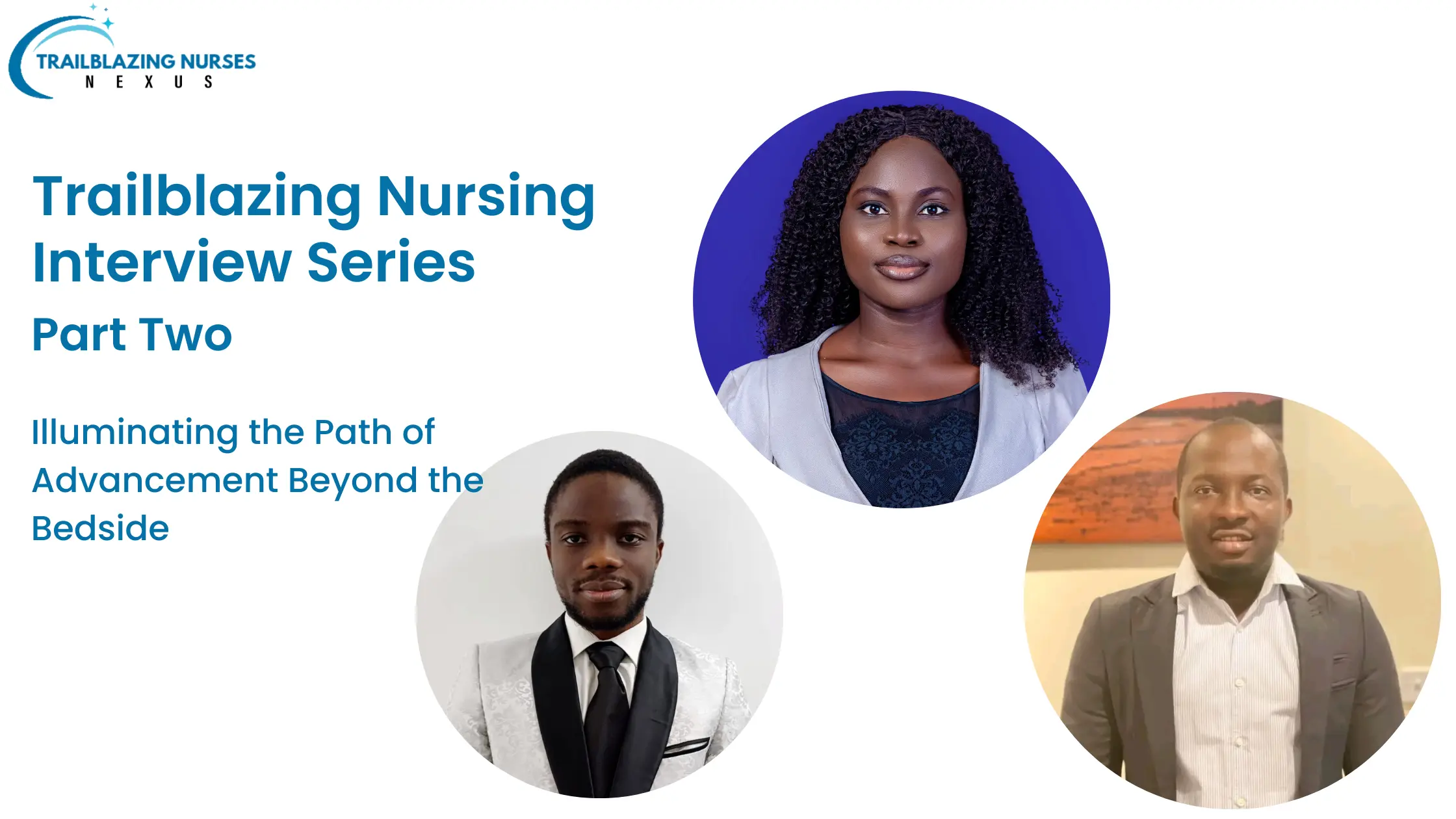Johnson & Johnson Nurses Innovate QuickFire Award in Peri-operative Care – Lessons on Innovation For Nurses.
By
Ayinla Daniel, Rn.
(Editor Care City).
There is pretty much we can all learn from the novel achievements of these Nurses.
In this article, I will talk briefly on the innovative ideas that saw them becoming nominees for Johnson & Johnson Nurses Innovate QuickFire Awards in Perioperative care, their motivation and little lessons I learnt from the criteria used to choose their ideas, I strongly believe that you are going to find it inspiring.
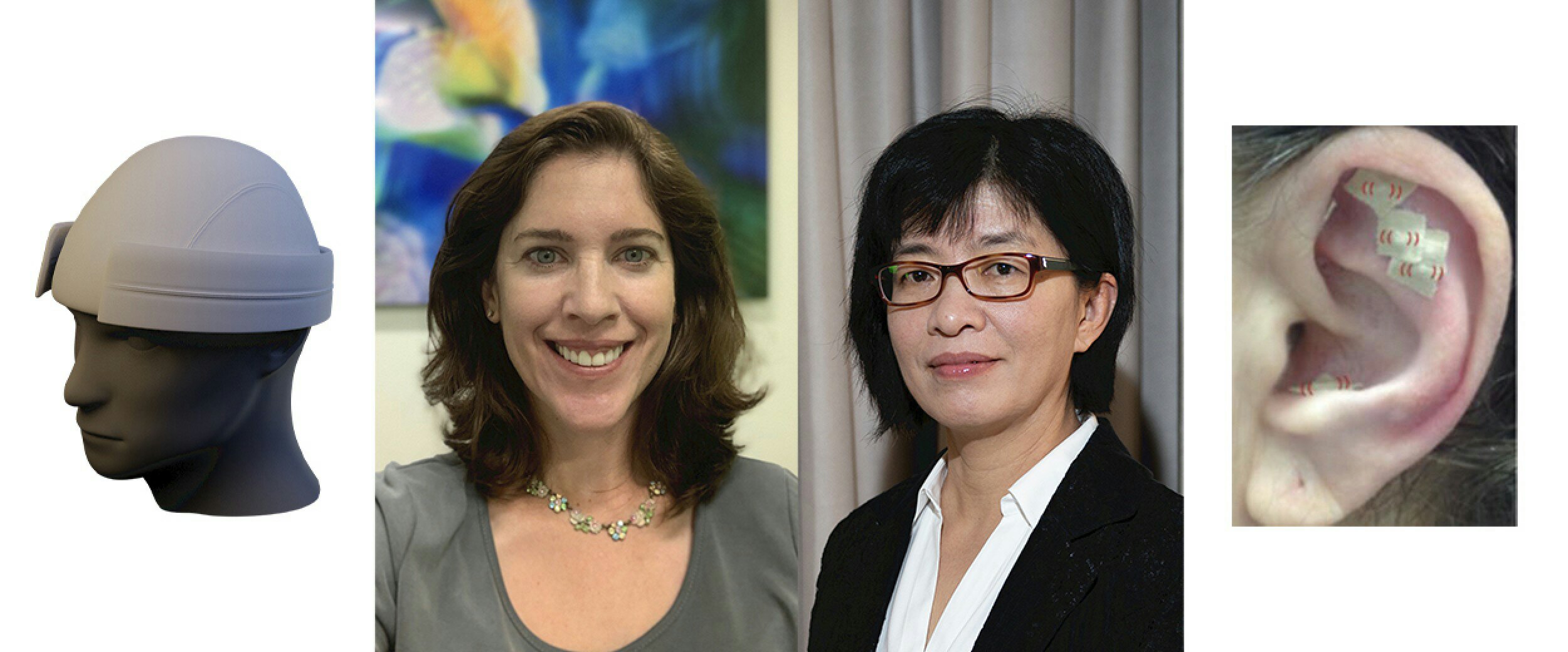
Debbie Kantor & Chao Hsing Yeh. (Pictured with their inventions)
“As a nurse and scientist, I never thought of myself becoming a nurse innovator. I would tell nurses you have to believe and love what you are doing. I often told myself, if I cannot do this, my patient won’t be able to do it. Be passionate about what you do. Find a positive environment and surround with people who will encourage, motivate and support you endlessly. Once you set up your goal, it may need to take a little detour, but your persistence will pay off. Keep trying, do not give up and do not settle.” Chao Hsing Yeh, PhD, Rn.
To tread the innovative pathway in any career demands that the elements of true passion, creativity and hard work are secured in the heart of whosoever desires to become an innovator. Stories of great innovators in all fields of endeavour reveal specific characters that can be found in the lives of all those who made an impact in their various fields.
In the Nursing profession, the waves of innovation might not be too prominent today, due to a number of factors, but it steadily gathers momentum that will see the future of nursing practice cocooned by innovative ideas that improve health care practice – ideas developed by Nurses who are actively involved in critical thinking and problem-solving.
Before I begin to talk about some lessons that inspired me, let’s briefly take a look at these innovative ideas, their efficiency/criteria used to choose them and the story behind them.
The Hero Bandage.

Debbie Kantor, APRN, Co-Founder at HERO Medical, created the HERO Bandage, a simple one-piece wound care dressing for the head or limbs designed to improve the self-care and monitoring of chronic wounds. Johnson&johnson.
This bandage is truly a hero. In clinical practice, wound care is a very delicate aspect that requires extra attention by health care practitioners responsible for their management, as improper handling of wounds can greatly increase the risk of the development of complications, which may include infection, haemorrhage, deformity among a host of other physiological complications.
“I couldn’t stop thinking about how there should be a quicker, easier way to stop bleeding more efficiently for both head and leg wounds, and that’s when the idea for the one-piece HERO Bandage came to me. And the name came from my love of Superman, and my belief that this solution can have a super impact on wound care.” – Debbie Kantor.
This brief statement which I extracted from the interview with Debbie succinctly describes how she channeled her passion into solving a problem she discovered. The hero bandage is a standard bandage that surely influences the outcome of wound care, it does this by; making wound dressing more efficient – its design allows flexibility and easy manoeuvrability, it becomes more handy in emergency care when you need to stop bleeding immediately presents itself.
Debbie describes her inventions capacity to influence wound care outcomes, she explained further, saying;
“The HERO Bandage is a single, sterile package that has the potential to help health systems be more efficient and lessen the burden for frontline healthcare workers. With fewer pieces and skills required, it provides an easy-to-use bandage that can cover a larger part of a wound in less time than a normal dressing would take. And I think what really makes our product unique is that it can eventually be used for the head, an amputation, a limb or other appendages. Also, current bandages only cover a part of the head while ours provides full coverage, so there really isn’t anything like it currently available.“
Brilliant idea there, with more support, from the likes of Johnson & Johnson this idea is surely becoming a reality and this feat is definitely going to be a source of inspiration for nurses who are nurturing the desire to become innovators.
“I would also tell myself, and younger nurses just beginning their innovation path, that it’s okay to be scared. Innovation is a journey different for everyone. Keep a journal and write down the good, the bad and the ugly. Fellow nurses of all stages can be a great resource. Find a champion who believes in you and the potential impact of your idea.” Debbie Kantor, APRN, Co-founder at Hero Medical.
Wireless Auricular Point Stimulation (APS)© 2019.
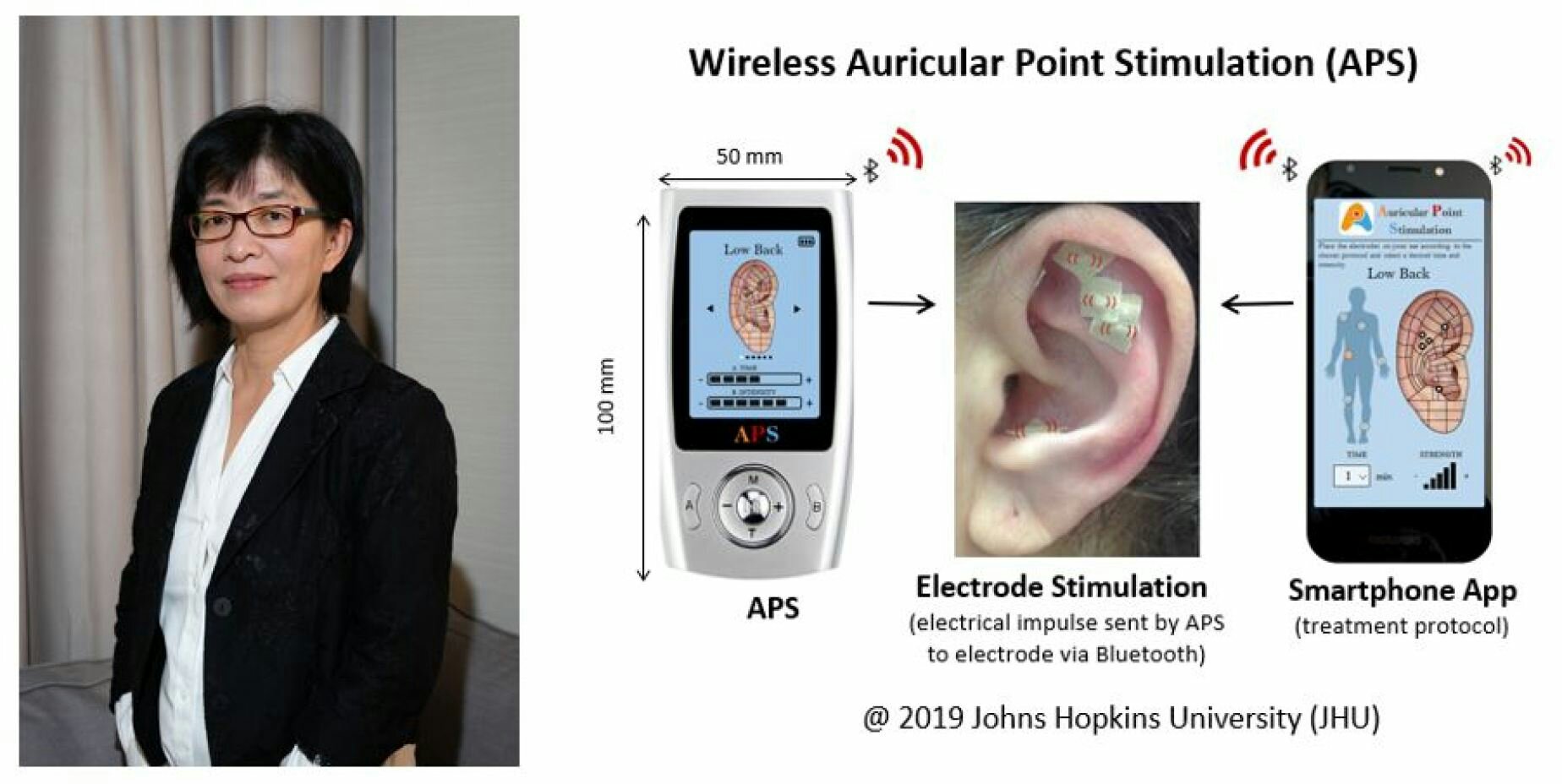
Chao Hsing Yeh, PhD, RN, Associate Professor at Johns Hopkins School of Nursing, developed Wireless Auricular Point Stimulation (APS)© 2019, JHU, a treatment based on traditional Chinese medicine acupuncture that aims to provide a non-invasive, self-administered and nonpharmacological treatment for pre-, intra- and postoperative pain. Johnson&Johnson.
Pain management in medical practice is one dimension of care that requires constant research in discovering the most effective methods of alleviating pain without causing harm or too much harm to the body.
Auricular point acupressure is an old Chinese medical practice that uses pressure points of the ear to help relieve pain. The belief is that the ear represents the human body, like a “minisystem,” since it is shaped like a foetus and some points on the ear represent/correspond to the position of body organs that can be massaged and relief of pain achieved.
This may sound odd to those who do not have any idea about Chinese medical practices which have been effectively used for up to 3000 years. Chao Hsing’s method combines the wisdom of ancient medicine with the technicalities of modern technology, this ingenuity is enjoyed when you comprehend her idea of using a smartphone that can be used to stimulate these pressure points on the ear when the device is placed on the ear or auricle.
She describes the device and its benefits :
“I believe opioid use has taken an incredible toll on not just patients, but entire health systems. I believe this toll has been physical, emotional and financial. Wireless APS has the potential to broaden the options of pain management and provide an adjunctive option for perioperative care. Moreover, APA could be more widely disseminated than acupuncture, allowing patients to focus on self-care by engaging the therapy daily, anywhere and anytime as a practical tool for pain control. The availability of APA as method of care offers the potential to improve patients’ quality of life in a cost-effective manner.“
Now, let us look at the criteria that were used to chose these ideas.
Criteria For Selection.
Their ideas were selected based on the following criteria:
- Thoroughness of their approach Feasibility and uniqueness of their idea.
- Identification of key resources
- Plan to further the idea and
- The solution’s potential to improve perioperative (pre-, intra- and post) care and health outcomes. Johnson & Johnson
In another article, we will take more time to describe these criteria, to enable nurses who are passionate about innovation understand some requirements.
Be Inspired.
Are you going to sit back and relax, while nurses like you around the world work round the clock trying to discover new and efficient methods of delivering nursing care? No you won’t, you will get inspired and join this army of inventors.
You will awaken the inventor within you, many problems await solutions and you are in the best position to provide solutions. You may say your environment is not helping you, well if you depend on this deficiency as an excuse not to work, then you still have a long way to go. Passion supersedes impossibilities. If you are really passionate about innovating, then you will make up your mind that nothing will hinder you, absolutely nothing.
Project Care
Project care is an interactive programme developed by Care City to help inspire aspiring innovators in the field of nursing in Nigeria and other countries. We know how much you want good company on your way to becoming an inventor, so we decided to be your company.
We will remind you of your dreams, think with you as you plan, support where possible, we will be the thinking team that will inspire you to do more, we will provide you with learning materials and try and secure necessary connections and above all integrate you into a community of nurses, health care practitioners and other professionals who are passionate about innovation.
Send us a mail today: Care_city@outlook.com
Team Care City
